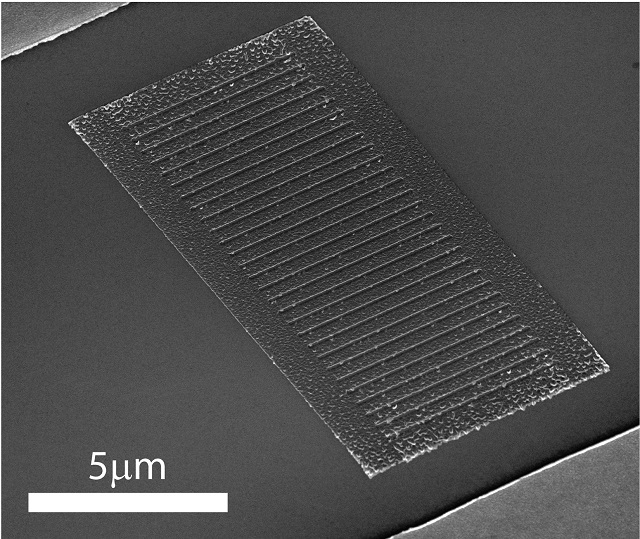
Researchers at Rice University’s Laboratory for Nanophotonics have demonstrated a method for designing imaging sensors by integrating light amplifiers and color filters directly into pixels. CREDIT: Bob Zheng/Rice University
Researchers at Rice University’s Laboratory for Nanophotonics have developed a biomimetic color photodetector that responds to the three light colors - red, green and blue, in a similar fashion as the human eye. The device utilizes a grating made of aluminum that can be added to complementary metal-oxide semiconductor (CMOS) silicon photodetectors.
Conventional photodetectors convert light into electrical signals but have no inherent color-sensitivity. They require color filters such as the dye color or off-chip dielectric filters for splitting the image into different color components.
However, when exposed to sunlight the color filtering degrades and these filters are not easily aligned to imaging sensors.
Today’s color filtering mechanisms often involve materials that are not CMOS-compatible, but this new approach has advantages beyond on-chip integration. It’s also more compact and simple and more closely mimics the way living organisms ‘see’ colors.
Naomi Halas, LANP Director the lead scientist on the study
The Office of Naval Research provided funding of $6 million for a project that used metamaterials to imitate the skin of cephalopods. These cephalopods are color-blind but are effective at camouflaging like the octopus. The lead author of the study, Bob Zheng, a graduate student at LANP, developed a photonic system capable of detecting colored light, based on cephalopods.

Rice University’s new biomimetic color photodetector uses aluminum gratings like the one in this image from a scanning electron microscope. The light-filtering slits in the grating are about 100 nanometers wide. CREDIT: Bob Zheng/Rice University
Employing plasmonic gratings and band engineering, he used a silicon photodetector topped with an ultrathin oxide coating onto which a thin aluminum layer was deposited. The interference effects that occurred between the photodetector’s surface and the plasmonic grating helped color selection.
The plasmonic gratings enabled tunability of color and enhancement of near fields. The absorption cross section was increased by the near-field interaction, which made the grating to behave as its own lens, causing the light to get funneled into a particular area.
The researcher stated that the photodetector was not just used as an amplifier, the plasmonic color filter was used to boost the amount of light entering the detector.
The study has been published online in the journal Advanced Materials.
References